Mining in Seville Province, Andalucia. Silver and coal with British mining companies
By Nick Nutter | Updated 4 Jun 2023 | Andalucia | History |
Login to add to YOUR Favourites or Read Later
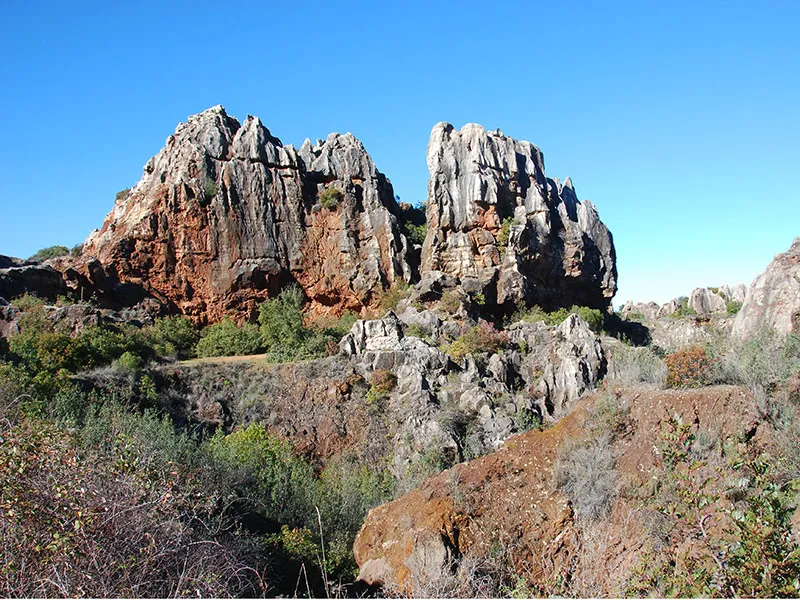
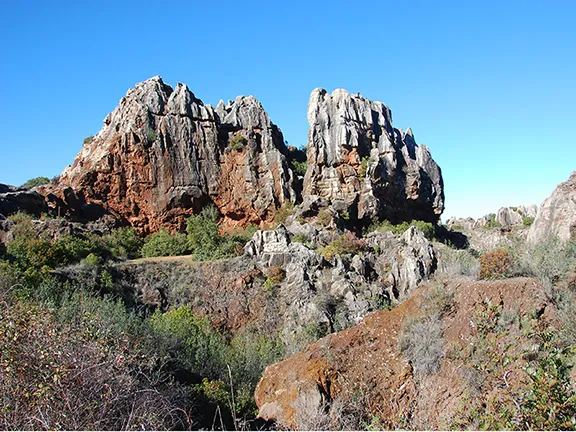
Cerro del Hierro
The Sierra Morena mountains stretch for 450 kilometres from Huelva province through the northern parts of Seville and Córdoba provinces to the head waters of the Guadalmena River in Castilla La Mancha. The range is rich in metallic minerals that have been exploited since prehistoric times. The pyrite belt has extensive deposits of copper ores with some silver and gold and quantities of other metals such as nickel and iron. The pyrite belt extends into Seville province where, in the 19th and early 20th centuries, about fifteen British companies were registered to exploit the metallic ores.
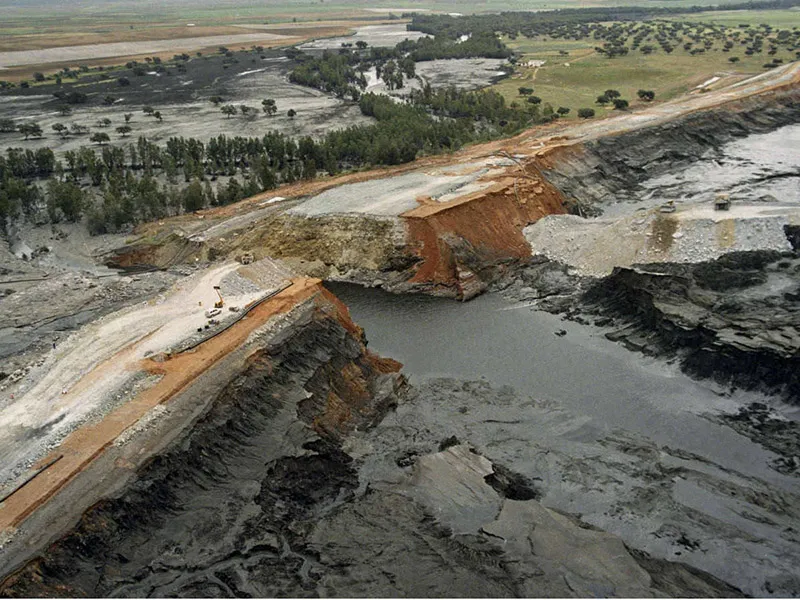
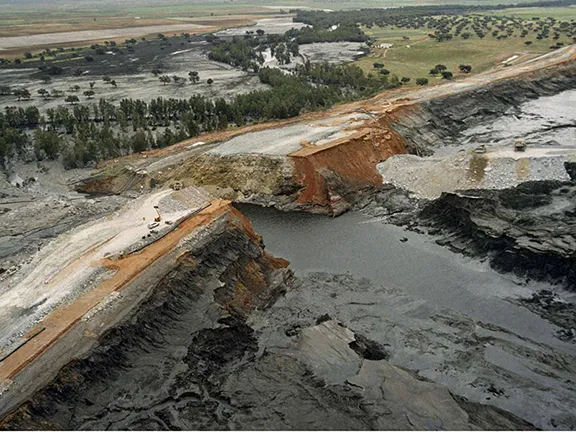
Aznalcóllar
The history of mining in Seville province may well start with the Cerro del Hierro (Hill of Iron) in the Sierra Norte de Sevilla, about 5 kilometres south of San Nicolas del Puerto. The iron ore has been mined for two thousand years leaving huge open pits between buttresses of limestone that glitter with the crystals of other minerals. Mining started before the Romans appeared in Andalucia and continued until the middle of the 20th century. Operated by Spanish companies until 1893, Cerro del Hierro was taken over by a British Company, William Baird and Company Ltd. After 1895, the ore was taken from the mine down a purpose built railway track to the port of Seville. The mine itself was an open pit mine with tunnels through the limestone that were used to transport the ore from the pits to the railhead.
Mining stopped during the Spanish Civil War and resumed after the Second World War when, in 1946, ownership went to the Spanish company, Nueva Montaña Quijano. In 1972 the mine was transferred to Cierro del Hierro SA, who exploited the mine until 1977. During the early 1980s a cooperation of miners mined the barites veins, work finally ceased in the mid 1980s. In the year 2000, the mine and its environs were acquired by the Ministry of the Environment of the Junta de Andalucía. It is now an open air museum and climbers paradise, well worth a visit.
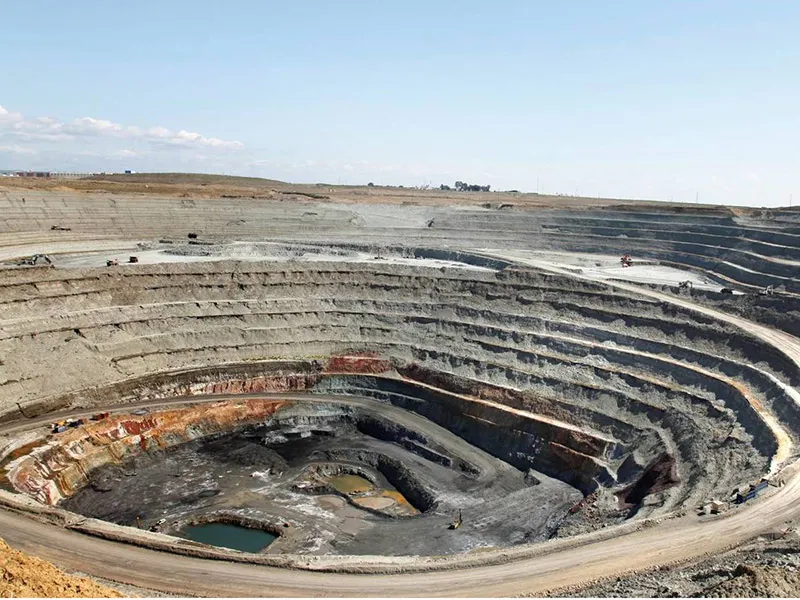
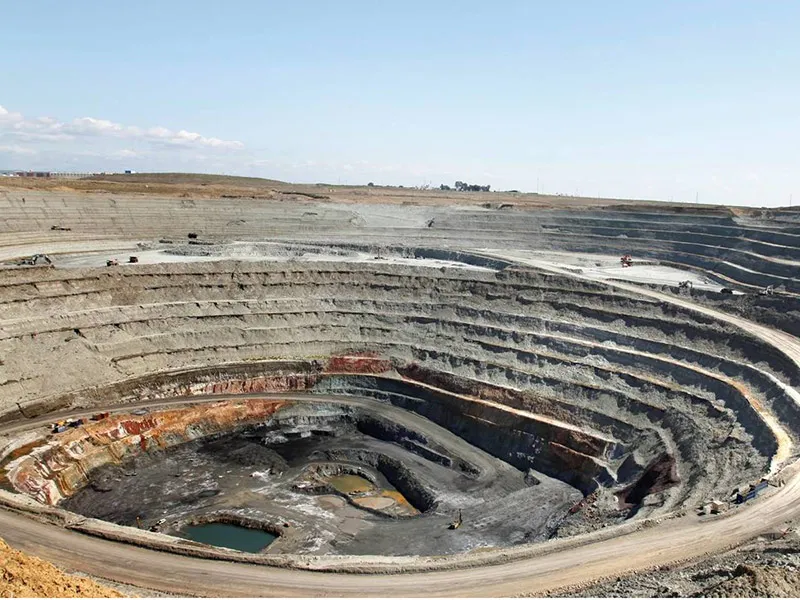
Cobre Las Cruces
The origins of mining at Aznalcóllar, 20 kilometres northeast of Seville, at the foot of the Sierra Morena are shrouded in mystery.
In 1873 the Seville Sulphur and Copper Company Ltd was registered in the UK with a declared interest in the Aznalcóllar area. As the name implies they were interested in copper and sulphur, of which there is little evidence in this part of the Sierra Morena. The company was dissolved in 1877 and immediately re-registered with an interest in a Cuchinon Mine of which there is no trace. One cannot help thinking the company directors were the victims of one of the many scams of the period.
Aznalcóllar is best known today for an unfortunate accident in 1998 when one of the waste lagoon dams of the Los Frailes lead-zinc mine belonging to the Swedish - Canadian enterprise Boliden in Aznalcóllar broke. The toxic water and sludge was only prevented from contaminating the Doñana National Park (in Huelva province), by constructing an emergency dam. In 2006, Boliden lost the claim against the companies that built the Aznalcóllar dam. The Spanish Supreme Court also confirmed that Boliden should pay 43.7 million euros to the Spanish government. The recovery costs of Aznalcóllar are estimated to be 240 million euro. The mine was producing about 125,000 tonnes of zinc and 2.9 million ounces of silver per year.
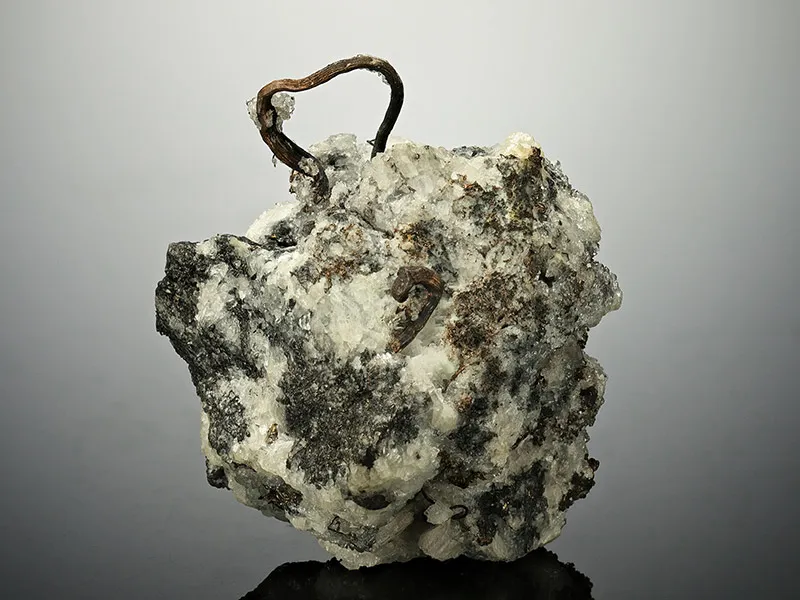
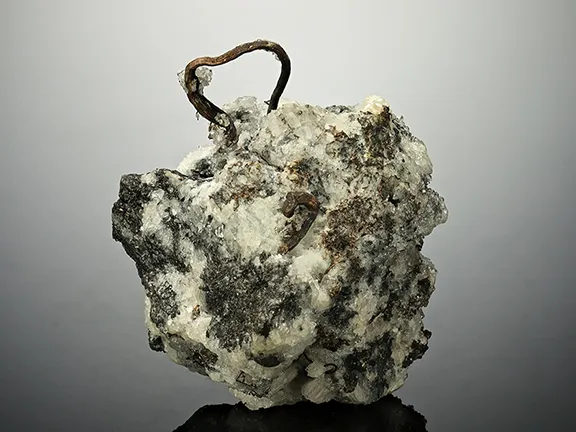
Native silver
Guadalcanal is in the furthest northern reaches of Seville province, in the Sierra Norte on the borders with Extremadura. In 1555, a silver mine, operated and abandoned eons previously, was rediscovered. It proved to be the most important silver mine in Spain and took its name from the largest silver mine in the world, the Cerro Rico mine in Bolivia.
Early investors included the German banking family, the Fuggers, who had made their fortune in long distance trading, mining and overseas ventures in the 16th century. They pulled out of the Pozo Rico venture leaving rumours of a fortune in gold behind a false wall somewhere in the 10th level of the mine (the rumour may have been propagated by Lady Mary Herbert de Powis when she was attempting to raise funds to exploit the mine in the 1740s).
It seems as though Pozo Rico was worked out sometime during the 17th century because the next record is from 1729 when the Compañia Española contracted Lady Mary Herbert de Powis to drain the mine, possibly the first British involvement in the Spanish mining industry. Lady Mary, from a lead mining family in Wales, had emigrated to Spain in 1727 and had become involved with a group of entrepreneurs led by an Abbe Paretti who were interested in the mines at Guadalcanal. The formidable lady raised funds from relatives and acquaintances to put together a mining team. Her father recruited an Irish lead miner called Donnelly who proved incompetent. Donnelly went to Cadiz and started dissuading other miners from joining Lady Mary’s consortium. Mary sent agents to Cadiz to remonstrate with Donnelly. There is a record that matters came to a head in a drunken brawl at the Plunket’s Tavern in Cadiz. Nevertheless, Mary managed to recruit 400 miners who were managed by a Count Joseph Cage.
Meanwhile the Pozo Rico mine had been successfully drained by 1732 but the Compañia Española refused to pay. Lady Mary took action against them and in 1742 was awarded the Guadalcanal mining concession along with an interest in the Rio Tinto mines. Lady Mary and her team went to Rio Tinto and started to drain the mine preparatory to working it, despite a counter claim to her ownership from one Samuel Tiquets who claimed to have inherited the mine. Tiquets persuaded the Spanish king, Ferdinand VI, that his claim was legitimate. In 1746 the king issued a decree depriving Lady Mary of her mines at Rio Tinto and Guadalcanal. When Tiquets arrived at Rio Tinto to claim his inheritance he found that Lady Mary had sold all the stores and stocks of ore and all the mules and horses. The mine buildings had been demolished and the drainage pipes and tanks had been destroyed.
The next British company to become involved at Guadalcanal was the Guadalcanal Silver Mining Association, registered in 1847 by a Scotsman, Duncan Shaw. He brought with him 30 Cornish miners and a pumping engine manufactured by Harvey’s of Cornwall. The venture failed within two years.
Finally, the Guadalcanal Mining Syndicate Ltd was registered in 1890. They won the concessions to the Robinson y Silvestre, Buena Ventura, Protectora, Isabel Salustrano, Santa Angel and Tres Amigos mining areas. There is no further information other than the Pozo Rico mine closed down in 1914.
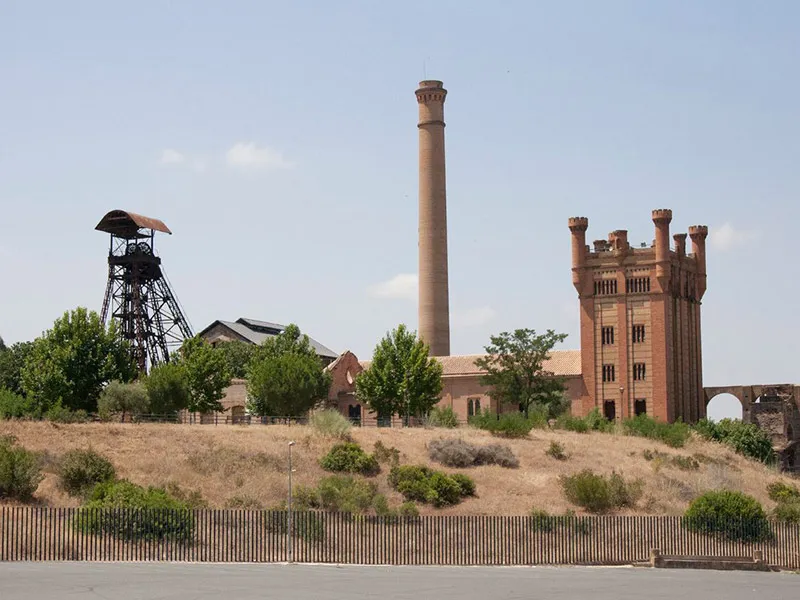
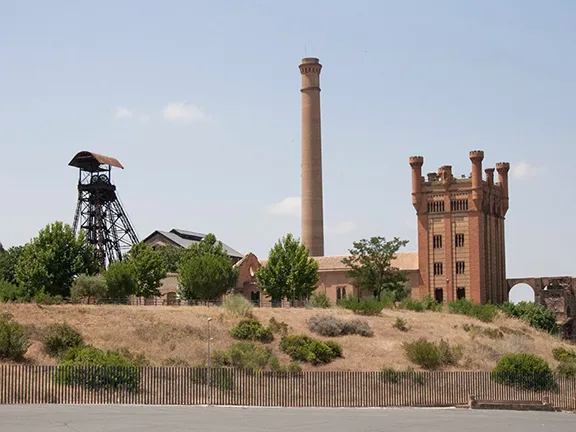
Villanueva del Rio y Minas
Coal is not a common mineral in southwest Spain. It forms from the woody material that grew during the Carboniferous era, some 360 – 300 million years ago, that was then covered by thousands of metres of sediment and compressed. Only a few areas in southwest Spain were actually above water during the carboniferous period.
One such area was in the Villanueva del Rio y Minas area, on the southern flanks of the Sierra Morena about 60 kilometres northeast of Seville city. There is a small coal basin with one obvious colliery, Minas de la Reunión , with an unusual castle like headframe on the upcast shaft.
Coal was discovered there during the 17th century. The mining itself was the reason for the foundation of the town that is really two adjoining towns, Villanueva del Rio and Villanueva del Minas. Coal was mined at the latter and transported to the former where it was loaded onto barges for transhipment to Seville. The mines were worked consistently, under different owners until 1972.
About four kilometres to the north-west of Seville in the municipality of Salteras, an open-pit copper mine started operations in 2009. It is a concealed deposit under Miocene clays that originally showed up as a gravity anomaly. It was subsequently evaluated by borehole. About 72,000 tons of ore are extracted each year and operations are planned until the year 2022.
The concession is being worked by First Quantum Minerals, a Canadian Company.
Even though Spain was neutral during the First World War, the war caused a number of problems for the mining industry; the cost of raw materials rose, international markets closed, Spain became increasingly protectionist and sterling fell in value. The Armistice was followed by a world depression in the 1920s
The economic problems of the 1914 -1920 period, the failure of some mines and the consolidation of others into one company and the sale of mines to Spanish companies meant that by 1920 there were only fourteen British registered mining companies left in Andalucia with only one of those being in Seville province, William Baird and Company Ltd. at Cerro del Hierro.
This is a list of the British registered mining companies that came and went in Seville province. Some prospered, some never got started. There may well be others missing from the list. I have only included those for which there is conclusive information.
Readers should also note that there is little mention of other foreign influence. The French, German and Belgians were also actively involved in mining and providing the mining infrastructure such as railroads and mining machinery, all areas for future research.
Andalucian Oilfields Ltd. Registered:1909 – There is only one onshore oilfield in Spain, the Ayoluengo field in the Basque – Cantabrian basin, discovered in the 1920s and exploited by CAMPSA, the government petroleum monopoly. It is presumed that the Andalucian Oilfields company failed.
Andalusian Mining Association Seville Not listed in1845 Originally formed in about 1843 as the Villa Verde Mining Association. Acquired five lead mines and eight copper mines. Ceased working about 1845.
Berlanga Silver Lead Mining Company, Ltd. Registered:1876. Dissolved: 1884 La Pastora and Chapparal mines near Berlanga, Seville.
Guadalcanal Silver Mining Association. Registered: 1847
Guadalcanal Mining Syndicate Ltd. Registered:1890 Robinson y Silvestre, Buena Ventura, Protectora, Isabel Salustrano, Santa Angel and Tres Amigos concessions
Iberian Iron Ore Company, Ltd. Registered:1893 Pedroso
Sevilla Lead Company, Ltd Sevilla. Registered:1870
Seville Sulphur and Copper Company Ltd. Registered:1873. Dissolved:1877 Aznalcollar
Seville Sulphur and Copper Company Ltd. Registered:1877 Cuchinon Mine
Sierra Morena Copper Mines Ltd. Registered:1900. Dissolved:1929. Bought Penaflor mine from the 'Columbia and North-West Mines Development Syndicate'
Sierra Jarena Mining Company Ltd Spain. Registered: 1870. Dissolved: 1884 Oriental Gold Mine in the Jarena Mountains. (There is no trace of an Oriental Gold Mine, nor of an area known as the Jarena mountains or Jarena Sierra or Jarena anything in Spain. This listing is included because it could well have been one of the bogus companies registered to extract money from unwary investors.)
William Baird and Company Ltd. Registered:1893. Cerro del Hierro.
References and further reading
Grimalt, Joan & Ferrer, Miguel & Macpherson, Enrique. (2000). The Mine Tailing Accident in Aznalcollar. The Science of the total environment. 242. 3-11. 10.1016/S0048-9697(99)00372-1.
Leblanc, M. & Morales, Juan & Borrego, José & Elbaz-Poulichet, Francoise. (2000). 4500-year-old mining pollution in Southwestern Spain: Long-Term implications for modern mining pollution. Economic Geology. 95. 655-662. 10.2113/gsecongeo.95.3.655.
Riart, Octavio Puche (2015) "Algunso datos Historicos Sobre La Mina de Plata de Pozo Rico" ESTI Minas y Energia. Madrid Published in 'De Re Metalica' 25, 2015 pp27-32 Sociedad Española para la defensa del Patrimonio Geologico y Minero.
Vernon, Robert. (2003). Beyond Huelva: Other British Mining Legacies in Andalucia, Spain.
Vernon, Robert. (2016). English miners in Spain during the 19th century - Mineros ingleses en España durante el siglo 19.
Vernon, Robert. (2016). Mining Areas of Southern Spain - Seville to Linares Suggested places to visit. Notes for delegates to the 11th International Mining History Congress.
Vernon, Robert. (2017). Database of British Registered Mining Companies formed to acquire, and work mines, in Spain and Portugal.
Wagner, Robert & Álvarez-Vázquez, Carmen. (2010). The Carboniferous floras of the Iberian Peninsula: A synthesis with geological connotations. Review of Palaeobotany and Palynology - REV PALAEOBOT PALYNOL. 162. 239-324. 10.1016/j.revpalbo.2010.06.005.